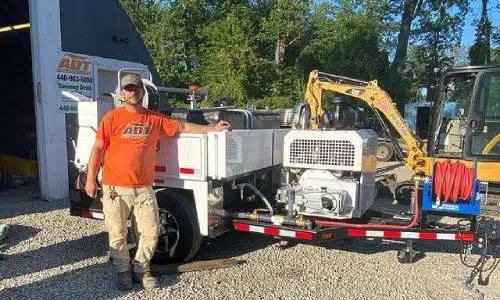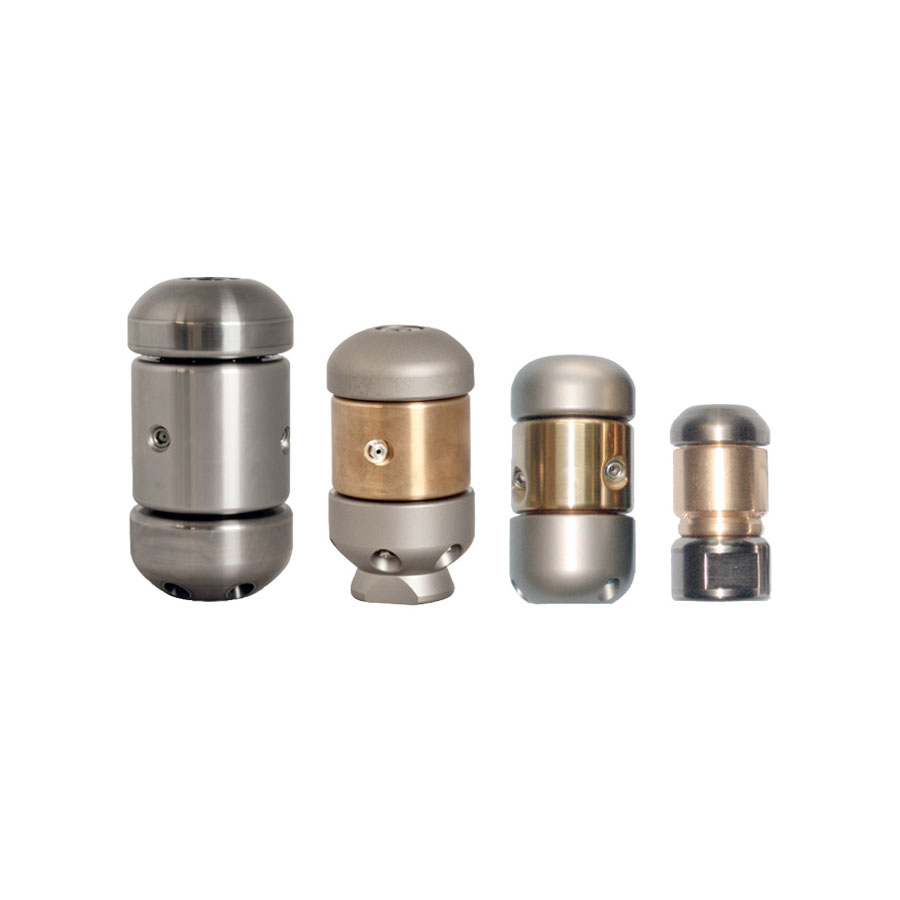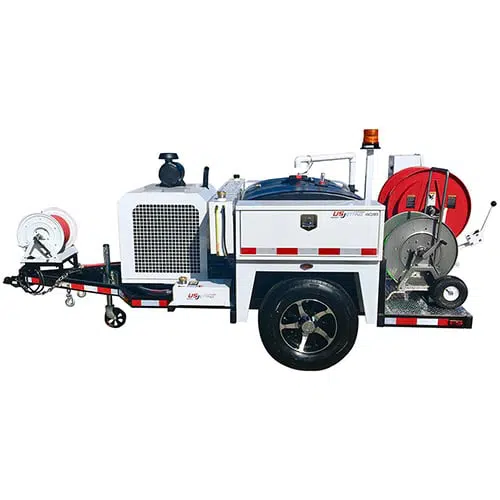
It’s the Most Wonderful Time of the Year…To Check Your Pump
As we head into winter, it becomes increasingly important to regularly service and maintains your jetting unit, so your jetting company doesn’t have to contend

For tackling roots or grease a rotary, aka spinning nozzle, is required. These types of nozzles will cut the roots and break up the grease. Depending on your access points or the way the pipe is flowing, you may be pushing the grease or roots out or bringing it back towards you. Once you know the flow, you can base your nozzle choice on the direction you need the debris to go. Forward jets will push the debris further down the line, while rear jets will pull the debris back towards you.
Descaling pipes is often required before relining a pipe. Over time, rust and/or hard debris may have developed on the sides of the pipe which must be removed for the relining to properly adhere. To fully clean, you must first use a rotary nozzle to descale the walls of the pipe. Then you should go through a second time with a nozzle that has at least one forward jet to push the recently descaled debris down the line. Multiple forward jets would be most efficient, but a single forward jet would also get the job done.
When culverts or storm drains get clogged, they are usually at least half-filled with debris. Therefore, heavy nozzles with multiple downward angled rear jets are required to not only keep the nozzle down at the bottom of the pipe but also pull debris back towards you. If the culvert is completely blocked, then you may need a heavy nozzle with forward jets in addition to rear jets. The forward jets will blast through the sand, sludge, or other debris, while the rear jets bring the debris back towards you.
To clear ice from a drain, you need a nozzle with multiple forward jets, rear jets, and some at 90 degrees. This allows you to not only penetrate the ice in the pipe ahead of the nozzle but also blast the ice along the walls of the pipes. Cold water with pressure will complete the job faster than lower pressure with hot water.
To handle a variety of applications, you will want to have a couple of all-purpose nozzles on hand. Two come with every purchase of a US Jetting unit. These nozzles should have a combination of front jets and rear jets to allow you the flexibility to blast debris in front and also bring debris back towards you. In addition to pulling back debris, rear jets are always required to propel the nozzle up the line.
When determining which nozzle to use for certain size pipes pressure, flow & distance of travel must be taken into consideration. You also must think about how many bends or turns you will encounter and to what degree they turn. For example, if you know you have several 90-degree bends then having a flexible hose affixed to the nozzle will make this job easier to tackle.
While these hose sizes are recommendations sometimes you can complete tougher jobs in bigger pipes if you have the pressure and flow to match. For example, a 4000PSI @ 18GPM jetter can do pipes up to 18” depending on what nozzle you select. The opposite can be said if you have a smaller pressure washer-style unit. If the jetting unit does not have a high enough performance, then you will not be able to effectively clean pipes larger than 4”, no matter what nozzle you use.
As a general rule, you can follow the guideline below to determine what size nozzle is needed for the pipes you are working in.
| Nozzle Size | Pipe Size Best Suited |
| 1/4″ | 2” – 4” |
| 3/8” | 3” – 6” |
| 1/2″ | 4” – 10” |
| 3/4” | 10” – 14” |
| 1” | 12” + |

As we head into winter, it becomes increasingly important to regularly service and maintains your jetting unit, so your jetting company doesn’t have to contend

Having spent a few years as a jetting contractor and manufacturing hydro jetting units for the last 35 years, I have come across all sorts

Main Office:
850 McFarland Pkwy, Alpharetta, GA 30004 Local: 770-740-9917 | Fax: 770-740-0297
California Location:
13571 Larwin Circle, Santa Fe Springs, CA 90670 Sally Woodhead: 404-936-1718 | 562-376-4656